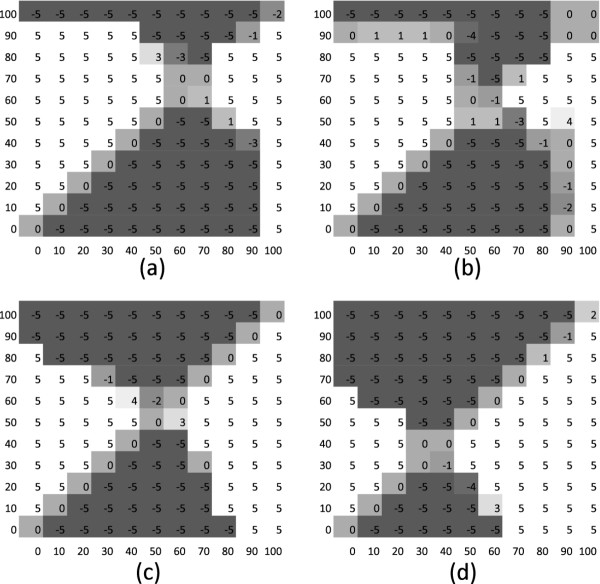Figure 1.
Comparison between two diploid populations (with L = 3 loci) with different percentage of asexual reproduction in a fluctuating environment. The two populations are in sympatry and compete for the same resources but they do not interbreed. Population 1 is on the vertical axis while population 2 is on the horizontal axis. In each scheme the percentage of asexual reproduction varies between 0 and 100 in step of 10 and each crossing is colored in relation with which population survived best: white is where population 1 prevailed, dark where population 2 did, and tones of grey in the middle. The four schemes are expression of different selection strength (columns, from weakest on the left to strongest on the right) and of different environment fluctuation periods (rows, longer on the top and shorter on the bottom). Details of subfigures: (a) σ = 0.7 and π = 50; (b) σ = 0.5 and π = 50; (c) σ = 0.7 and π = 10; (d) σ = 0.5 and π = 10.

